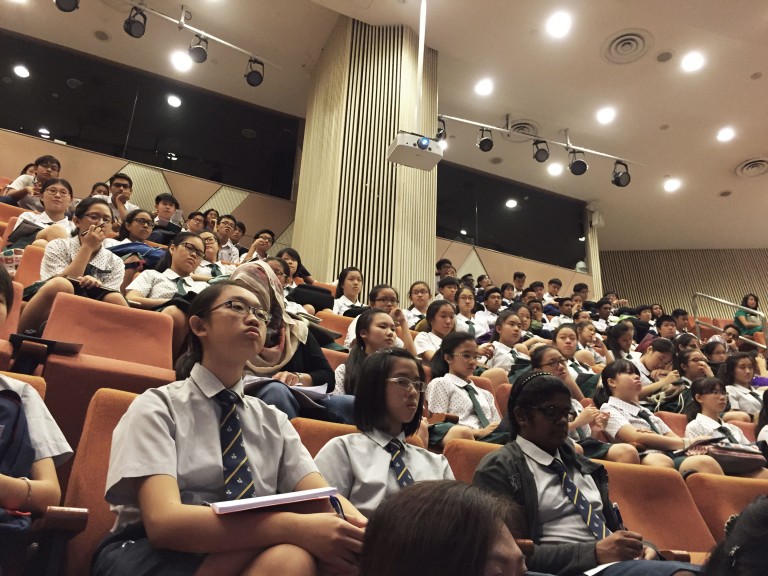Q&A AT SINGAPORE’S SCIENCE CENTER

Earth is an oceanic planet – 70% of our world is covered in water, 50% of the air we breathe comes from the ocean, and life itself originated there. We owe so much to the oceans, however, there is still so much that we do not understand. Research missions of board of RVFalkor strive to change that lack of information, one expedition at a time. And the knowledge we produce, we want to share.
Lead scientists getting ready for the upcoming MEGATERA expedition met with around 150 high school students at Singapore Science Center this week. They shared their knowledge about the upcoming cruise and answered the questions of a very interested audience. Here we share some of the exchanges.
Why do higher magnitude earthquakes not always cause larger tsunamis?
To understand this, we need to look at the mechanisms that cause a tsunami.
When two tectonic plates become “locked” it does not mean that they stop moving. Instead the down-going plate starts to drag down and bend the overriding plate. After hundreds of years, significant amounts of energy have been stored, which can cause the plates to slip and generate an earthquake.
The overriding plate then springs back up, much like the motion of a diving board. This causes the sea floor to move upward, which displaces the water above it. It is this displacement that generates tsunamis.
Significant movement of the seafloor and subsequent displacement of the water column mainly occurs in shallow earthquakes. Deeper earthquakes do not always rupture the surface of the sea floor and therefore won’t cause a tsunami. Depth of earthquake is more important than magnitude for tsunami generation. A shallow, weaker magnitude earthquake could cause a larger tsunami than a high intensity earthquake located deep under the ocean.

What is Bathymetry?
Bathymetry is the study of the surface of the sea floor – its higher and lower structures. Bathymetry can be thought of as the underwater equivalent of topography.
Is there a significant relationship between the distance of the subduction zone from the shore and the size of a tsunami?
Yes. A tsunami will gradually lose energy the further it travels. This was observed in the 2004 Indian Ocean tsunami where countries such as Thailand and Indonesia experienced larger wave heights than countries further away from the earthquake source, such as India.
Is R/V Falkor considered safe during a tsunami?
Yes. In the open ocean tsunami waves have low amplitudes/ heights. In fact, a ship at sea may not even notice a tsunami wave passing. Tsunamis generated in the deep ocean have very long wavelengths and low heights. It is not until a tsunami approaches land that wave height increases. As water depth becomes shallower, the wave is slowed down and wavelength decreases. This results in an increase in wave height.
How can R/V Falkor help Singapore even though there are no tsunamis around Singapore?
Although Singapore is relatively safe from a tsunami, the countries surrounding Singapore are not. As Singapore has close relationships with the countries in South East Asia, any of the economic problems associated with a tsunami would likely be felt in Singapore.

Questions were answered by:
Haryadi Permana (LIPI) – Geoscience in Indonesia and how hazards can help
Paul Tapponnier (EOS) – Importance of this research for EOS/NTU and Singapore
Leonard Pace (SOI) – Using science and technology in ocean research/ about Falkor
Satish Singh (EOS/IPGP) – Mega-tera / data collection and analysis


